Dacia Spring vs Peugeot Traveller – Performance, range & efficiency compared
Compare performance, boot capacity, efficiency and price at a glance.
Find out which car is the better choice for you – Dacia Spring or Peugeot Traveller?
Costs and Efficiency:
When it comes to price and running costs, the biggest differences usually appear. This is often where you see which car fits your budget better in the long run.
Dacia Spring has a significantly advantage in terms of price – it starts at 14500 £, while the Peugeot Traveller costs 34800 £. That’s a price difference of around 20340 £.
In terms of energy consumption, the advantage goes to the Dacia Spring: with 13.20 kWh per 100 km, it’s decisively more efficient than the Peugeot Traveller with 24.30 kWh. That’s a difference of about 11.10 kWh.
As for range, the Peugeot Traveller performs clearly perceptible better – achieving up to 351 km, about 123 km more than the Dacia Spring.
Engine and Performance:
Power, torque and acceleration say a lot about how a car feels on the road. This is where you see which model delivers more driving dynamics.
When it comes to engine power, the Peugeot Traveller has a clearly edge – offering 180 HP compared to 65 HP. That’s roughly 115 HP more horsepower.
In acceleration from 0 to 100 km/h, the Peugeot Traveller is noticeable quicker – completing the sprint in 10.60 s, while the Dacia Spring takes 13.70 s. That’s about 3.10 s faster.
In terms of top speed, the Peugeot Traveller performs distinct better – reaching 185 km/h, while the Dacia Spring tops out at 125 km/h. The difference is around 60 km/h.
There’s also a difference in torque: Peugeot Traveller pulls clearly stronger with 400 Nm compared to 125 Nm. That’s about 275 Nm difference.
Space and Everyday Use:
Cabin size, boot volume and payload all play a role in everyday practicality. Here, comfort and flexibility make the difference.
Seats: Peugeot Traveller offers clearly more seating capacity – 8 vs 4.
In curb weight, Dacia Spring is decisively lighter – 1013 kg compared to 1953 kg. The difference is around 940 kg.
In terms of boot space, the Peugeot Traveller offers significantly more room – 2011 L compared to 308 L. That’s a difference of about 1703 L.
In maximum load capacity, the Peugeot Traveller performs significantly better – up to 3300 L, which is about 2296 L more than the Dacia Spring.
When it comes to payload, Peugeot Traveller decisively takes the win – 914 kg compared to 302 kg. That’s a difference of about 612 kg.
Who wins the race?
The Peugeot Traveller proves to be dominates this comparison and therefore becomes our DriveDuel Champion!
Peugeot Traveller is the better all-rounder in this comparison.
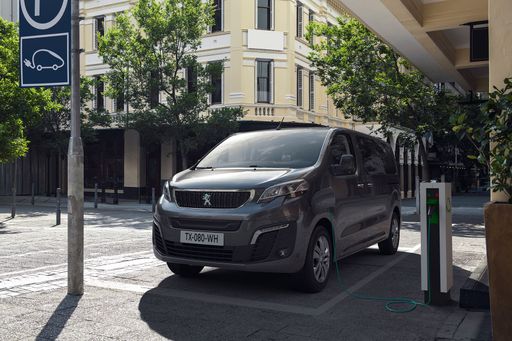
Peugeot Traveller
Dacia Spring
The Dacia Spring stands out as an affordable and environmentally friendly option in the electric vehicle market, combining practicality with a compact design ideal for urban settings. Its minimalist interior, while basic, provides all the essential features needed for a comfortable drive, reflecting its cost-effective approach. The vehicle's performance suits city driving, making it an appealing choice for those seeking an entry-level electric car.
details @ dacia-presse.de
@ dacia-presse.de
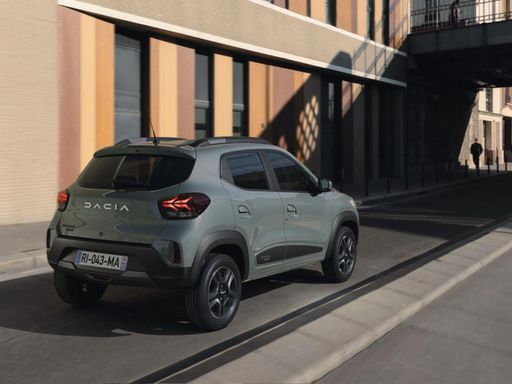 @ dacia-presse.de
@ dacia-presse.de
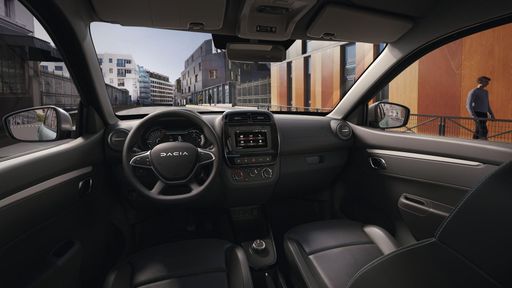 @ dacia-presse.de
@ dacia-presse.de
Peugeot Traveller
The Traveller captivates with its refined blend of comfort and versatility, making it an ideal choice for both family adventures and professional needs. Its spacious interior accommodates a remarkable range of passenger and cargo configurations, ensuring flexibility for any journey. With an emphasis on safety and modern features, the Traveller delivers a remarkable driving experience that caters to diverse lifestyles.
details @ media.stellantis.com
@ media.stellantis.com
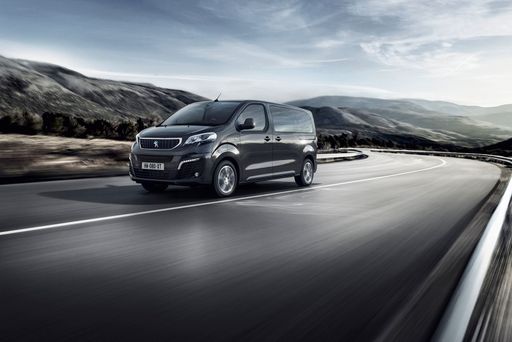 @ media.stellantis.com
@ media.stellantis.com
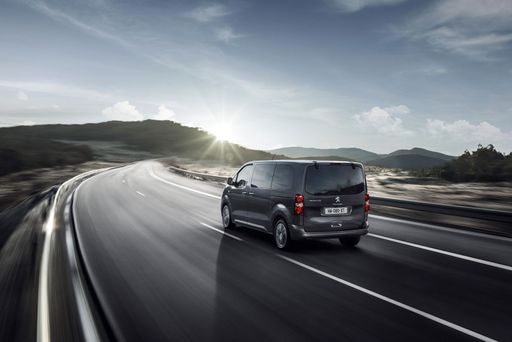 @ media.stellantis.com
@ media.stellantis.com
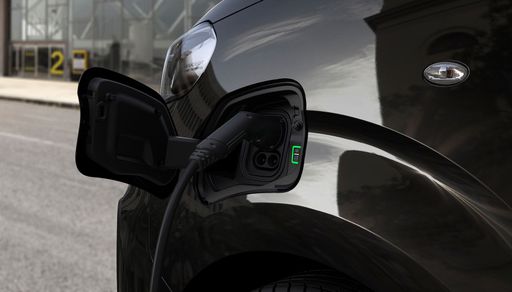 @ media.stellantis.com
@ media.stellantis.com

|

|
|
|
|
Costs and Consumption |
|
|---|---|
|
Price
14500 - 17100 £
|
Price
34800 - 52200 £
|
|
Consumption L/100km
-
|
Consumption L/100km
7 - 7.1 L
|
|
Consumption kWh/100km
13.2 - 14.1 kWh
|
Consumption kWh/100km
24.3 - 25 kWh
|
|
Electric Range
225 - 228 km
|
Electric Range
217 - 351 km
|
|
Battery Capacity
26.80 kWh
|
Battery Capacity
-
|
|
co2
0 g/km
|
co2
0 - 188 g/km
|
|
Fuel tank capacity
-
|
Fuel tank capacity
70 L
|
Dimensions and Body |
|
|---|---|
|
Body Type
SUV
|
Body Type
Bus
|
|
Seats
4
|
Seats
8
|
|
Doors
5
|
Doors
5
|
|
Curb weight
1013 - 1050 kg
|
Curb weight
1953 - 2240 kg
|
|
Trunk capacity
308 L
|
Trunk capacity
1624 - 2011 L
|
|
Length
3701 mm
|
Length
4983 - 5333 mm
|
|
Width
1583 mm
|
Width
1920 mm
|
|
Height
1519 mm
|
Height
1890 mm
|
|
Max trunk capacity
1004 L
|
Max trunk capacity
2700 - 3300 L
|
|
Payload
265 - 302 kg
|
Payload
850 - 914 kg
|
Engine and Performance |
|
|---|---|
|
Engine Type
Electric
|
Engine Type
Electric, Diesel
|
|
Transmission
Automatic
|
Transmission
Automatic
|
|
Transmission Detail
Reduction Gearbox
|
Transmission Detail
Reduction Gearbox, Automatic Gearbox
|
|
Drive Type
Front-Wheel Drive
|
Drive Type
Front-Wheel Drive
|
|
Power HP
44 - 65 HP
|
Power HP
136 - 180 HP
|
|
Acceleration 0-100km/h
13.7 - 19.1 s
|
Acceleration 0-100km/h
10.6 - 14.2 s
|
|
Max Speed
125 km/h
|
Max Speed
130 - 185 km/h
|
|
Torque
113 - 125 Nm
|
Torque
270 - 400 Nm
|
|
Number of Cylinders
-
|
Number of Cylinders
4
|
|
Power kW
33 - 48 kW
|
Power kW
100 - 132 kW
|
|
Engine capacity
-
|
Engine capacity
2184 cm3
|
General |
|
|---|---|
|
Model Year
2024
|
Model Year
2024 - 2025
|
|
CO2 Efficiency Class
A
|
CO2 Efficiency Class
A, G
|
|
Brand
Dacia
|
Brand
Peugeot
|
What drive types are available for the Dacia Spring?
The Dacia Spring is available as Front-Wheel Drive.
The prices and data displayed are estimates based on German list prices and may vary by country. This information is not legally binding.
